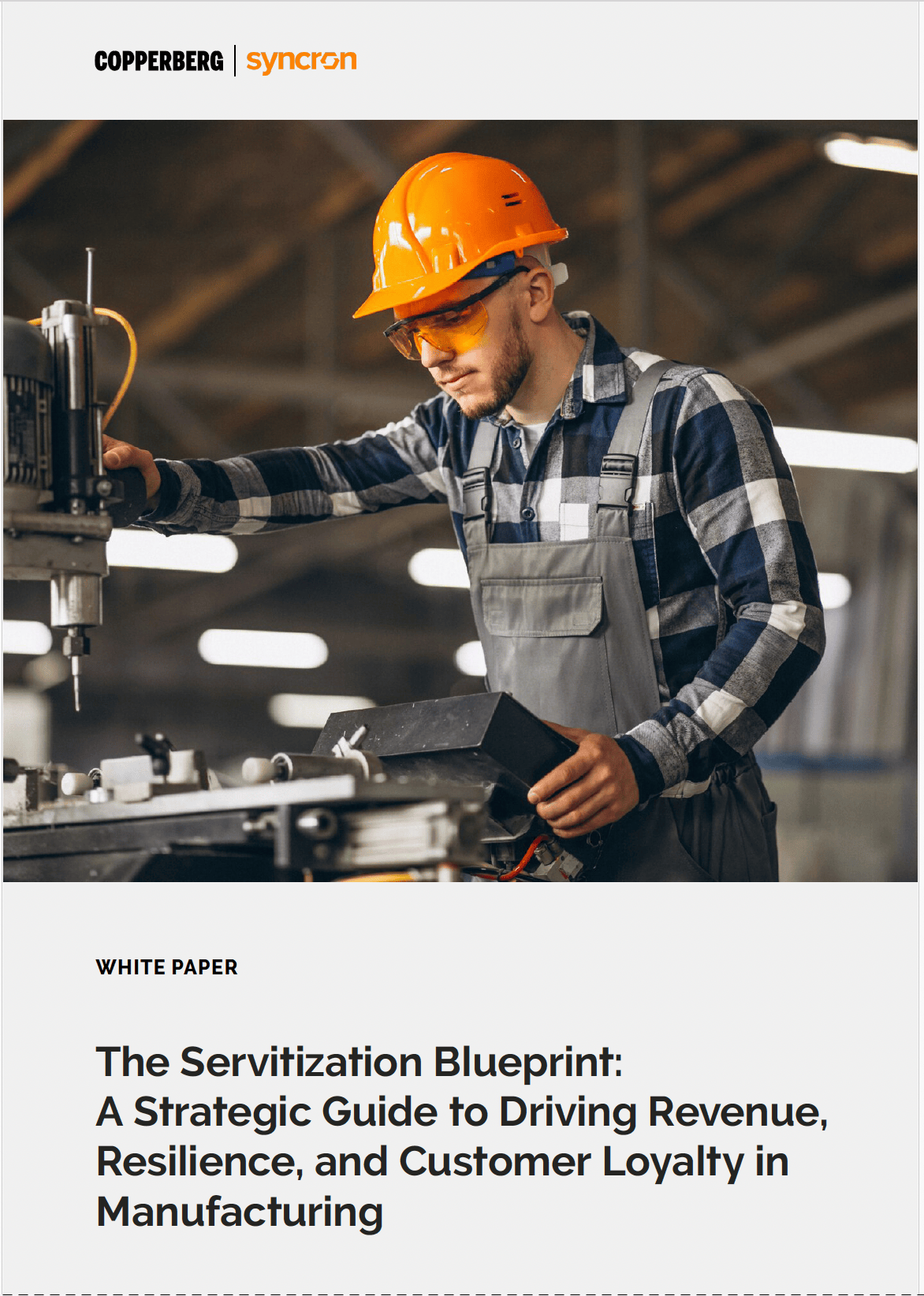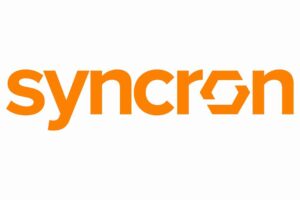The Servitization Blueprint: Transformative Technologies for Competitive Advantage
Technology is transforming manufacturing by enabling servitization success. Discover how AI, IoT, and integrated platforms optimize service delivery, drive profitability, and build customer loyalty.
Technology is no longer a supporting function in manufacturing—it is the backbone of competitive advantage, particularly in the age of servitization. As manufacturers shift from selling products to delivering outcomes, advanced technologies provide the scalability, precision, and insights needed to meet rising customer expectations and operational demands.
AI, IoT, and data management platforms are driving this transformation, enabling manufacturers to predict costs, optimize service contracts, and deliver proactive support. Tools like Syncron’s Contract Price solution illustrate how technology can derisk servitization by improving pricing precision and aligning value delivery with customer expectations.
Manufacturers leveraging AI and IoT have already seen operational cost reductions of up to 20%(1). Those who fail to adopt these tools risk falling behind competitors who are embracing technology to optimize service delivery and enhance customer loyalty.
Core Technologies Driving Competitive Advantage
Advanced technologies are enabling manufacturers to redefine their service offerings and create long-term customer value at scale.
AI and Machine Learning (AI/ML):
AI and machine learning are foundational technologies for predicting costs, optimizing pricing, and improving service delivery.

 Data usage note: By accessing this content you consent to the contact details submitted when you registered as a subscriber to fieldservicenews.com to be shared with the listed sponsor of this premium content Syncron who may contact you for legitimate business reasons to discuss the content of this briefing report.
Data usage note: By accessing this content you consent to the contact details submitted when you registered as a subscriber to fieldservicenews.com to be shared with the listed sponsor of this premium content Syncron who may contact you for legitimate business reasons to discuss the content of this briefing report.
Want to know more? Download the full white paper today!
"An industrial machinery provider equipped its fleet with IoT sensors, enabling predictive maintenance that improved equipment uptime by 30% and reduced maintenance costs by 20%"
Contract Pricing and Cost Prediction:
Syncron’s Contract Price solution exemplifies how AI/ML can revolutionize contract management.
By analyzing historical data, current market trends, and operational costs, this tool provides manufacturers with real-time insights to price service agreements accurately, ensuring profitability while meeting customer needs (2). Without such tools, manufacturers risk leaving significant margins on the table—or worse, overpricing contracts and alienating customers.
Performance Optimization:
AI-powered platforms can predict when components are likely to fail, enabling manufacturers to schedule maintenance and minimize downtime proactively.
DATA POINT! One global heavy equipment OEM integrated AI/ML into its service operations, reducing unplanned downtime by 25% and saving millions in repair costs annually.
Internet of Things (IoT) and Predictive Analytics:
IoT connects physical assets to the digital ecosystem, providing real-time data that enhances visibility and supports proactive maintenance strategies.
Real-Time Monitoring:
Sensors embedded in equipment collect performance data, alerting service teams to potential issues before they escalate.
Predictive Maintenance:
IoT-driven analytics can identify wear patterns or anomalies, allowing manufacturers to address problems proactively.
DATA POINT! An industrial machinery provider equipped its fleet with IoT sensors, enabling predictive maintenance that improved equipment uptime by 30% and reduced maintenance costs by 20%(3).
Data Management Platforms and ERP/CRM Integration:
Data management is critical for breaking silos and creating a unified view of operations, as discussed in the second article in this series.
Integrated Systems:
Enterprise Resource Planning (ERP) and Customer Relationship Management (CRM) platforms consolidate data from sales, service, and operations into a single source of truth.
Operational Benefits:
These systems streamline communication between departments, ensuring faster response times and more personalized customer service.
DATA POINT! A leading automotive OEM integrated ERP and CRM platforms, enabling its sales and service teams to collaborate effectively. This resulted in a 15% reduction in service response times and a measurable increase in customer satisfaction(4).
Enterprise Asset Management (EAM):
EAM systems provide manufacturers with tools to monitor and manage the lifecycle of their assets efficiently.
Asset Lifecycle Optimization:
platforms track usage, maintenance schedules, and operational efficiency, ensuring that assets deliver maximum value throughout their lifecycle.
Scalability:
By integrating EAM with IoT and AI/ML, manufacturers can scale their operations without sacrificing precision or control.
"Mobile tools offer the functionality to identify required parts through QR codes or image recognition, streamlining the process of ordering replacements..."
Enhancing Service Contract Administration
Service contracts are a cornerstone of servitization, but managing them effectively requires technology that can handle their complexity and scale.
Dynamic Pricing:
AI-driven tools like Syncron’s Contract Price ensure contracts are accurately priced by predicting material and labor costs while accounting for variables like inflation and usage patterns.
Manufacturers relying on outdated pricing methods may struggle to remain competitive, particularly as customer expectations for transparent, fair pricing continue to rise.
Scalability:
Technology platforms streamline contract administration, enabling manufacturers to manage thousands of contracts without compromising accuracy or efficiency.
Risk Mitigation:
By quantifying potential risks in real-time, advanced tools help manufacturers derisk service agreements and maintain profitability.
Driving Profitability Through Data-Driven Insights
Data is the fuel of servitization, and leveraging it effectively is key to profitability.
High-Margin Opportunities:
AI can segment customers by profitability and service needs, allowing manufacturers to tailor offerings and prioritize high-margin accounts.
Operational Efficiency:
Predictive analytics reduce waste by optimizing resource allocation, from spare parts to technician schedules.
DATA POINT! A leading automotive OEM used AI to analyze service data, identifying underperforming contracts and renegotiating terms. This led to a 15% improvement in overall service profitability within two years(5).
Building Customer Loyalty with Advanced Tools
Technology is also a key driver of customer loyalty, enabling manufacturers to offer highly personalized and proactive service.
Uptime as a Differentiator:
IoT and predictive analytics ensure customers experience minimal disruptions, fostering trust and long-term relationships.
Personalized Service:
Data insights allow manufacturers to tailor maintenance schedules, pricing models, and service packages to individual customer needs.
DATA POINT! A construction equipment manufacturer personalized service contracts for its largest clients, boosting contract renewals by 40% over three years (6.)
Future Trends and Continuous Innovation
Emerging technologies are poised to redefine service delivery further.
Augmented Reality (AR):
Field technicians equipped with AR glasses can access real-time instructions and schematics, reducing repair times and improving accuracy.
For example, a global industrial OEM piloted AR-based field service tools, cutting average repair times by 30% while enhancing technician productivity.
Blockchain for Transparency:
Blockchain-enabled service contracts ensure transparency and trust by recording all agreement terms and performance metrics in an immutable ledger. Blockchain also has potential applications in supply chain transparency, enabling better tracking of parts and components.
While these technologies hold great promise, manufacturers must address challenges such as cost, integration complexity, and ROI assessment to capitalize on their potential.
Technology as the Driver of Servitization
Transformative technologies like AI, IoT, and EAM are not just enablers of servitization—they are its foundation. Manufacturers who adopt these tools can optimize service delivery, enhance customer loyalty, and maintain a competitive edge in an increasingly service-driven economy.
Manufacturers leveraging AI and IoT today have already seen operational cost reductions of up to 20%1. Beyond operational efficiency, these tools are critical for fostering the trust and loyalty needed to secure long-term customer relationships in the servitization era.
The ability to scale service offerings without sacrificing precision or efficiency will define which manufacturers lead in the era of servitization. The question is no longer whether to adopt these technologies but how quickly manufacturers can integrate them to achieve scalable, long-term success.
Footnotes:
- Field Service News. “Leveraging AI and IoT for Cost Optimization in Manufacturing.”
- Syncron. “AI-Powered Pricing for Service Contracts.”
- Forbes. “The ROI of Predictive Maintenance in Heavy Machinery.“
- CIO.com. “ERP and CRM Integration: A Key to Service Transformation.”
- Harvard Business Review. “Personalization in Service Contracts.“
Do you want to know more?
This article is an excerpt from the white paper, The Servitization Blueprint. Download and read the full white paper now!


Data usage note: By accessing this content you consent to the contact details submitted when you registered as a subscriber to fieldservicenews.com to be shared with the listed sponsor of this premium content Syncron who may contact you for legitimate business reasons to discuss the content of this briefing report.


